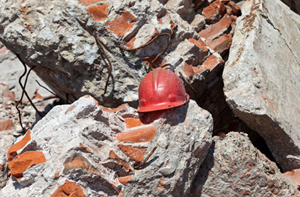New England Crane School’s 2013/2014 Class Schedule
October 14, 2013
Signal/rigging class, Portland, ME
October 28 – 31, 2013
Operator certification class, boom truck only, sponsored by Associated Builders and Contractors of Maine, Augusta, ME
November 1, 2013
Signal/rigging class, ABC Maine, Augusta, ME
November 8, 2013
Signal/rigging class, White River Junction, VT. Discounts available for members of AGCVT
December 3 – 6, 2013
Operator certification class, sponsored by Associated Builders and Contractors of NH-VT, Concord, NH
January 27 – 30, 2014
Operator certification class, sponsored by Associated General Contractors of Vermont, Montpelier, VT
January 31, 2014
Signal/rigging class, AGCVT, Montpelier, VT
February 10 – 13, 2014
Operator certification class, Portland, ME
February 14, 2014
Signal/rigging class, Portland, ME
February 20, 2014
Signal/rigging class, sponsored by Associated General Contractors of Vermont, Montpelier, VT
February 25 – 28, 2014
Operator certification class, sponsored by Associated Builders and Contractors of NH-VT, Concord, NH
March 24 – 27, 2014
Operator certification class, sponsored by Woods CRW Corp and AGCVT, Burlington, VT
March 28, 2014
Signal/rigging, sponsored by Woods CRW and AGCVT, Burlington, VT
April 16, 2014
Signal/rigging, sponsored by AGCVT, Montpelier, VT
For more information or to register, call 603-614-4331 or visit newenglandcraneschool.com. |
|
Lawsuit from Local Crane Accident Fatality Underscores How Widely Liability Can Range
We are often asked questions about who will be held responsible for violations of the crane standard, especially in the case of an accident. For example, can the crane operator be blamed if there is no qualified signal person or rigger? What about the owner of the crane, or a crane rental company?

A lawsuit filed in connection with last year’s tragic fatality during the Hanover Inn renovation project illustrates the point that when the worst happens, everyone on the project is likely to be impacted in some way. A worker was killed when he was knocked off a hydraulic lift by a weight attached to a crane cable and fell head first into a pile of steel beams. His estate has filed suit against Dartmouth College, which owns the Hanover Inn; the subcontractor who employed the deceased worker; the general contractor for the project; the crane service who supplied the crane and operator; and the individual worker (an independent contractor) who was hired to work as a qualified signal person and rigger. In other words, absolutely everyone who had anything to do with the accident was sued.
Of course, this is America and that means anyone can sue anyone for just about anything. The question of whether violations occurred is a separate issue, and has no clear answer in this case. While we are not privy to the full investigation results, the Valley News reports that the subcontractor who contracted the signal person was cited by OSHA for lack of a qualified signal person, and the crane service was also cited for failing to ensure the signal person was qualified. Both companies contested the citations, with the subcontractor receiving a reduced violation and the crane service succeeding in getting the citation dismissed altogether, and an OSHA spokesperson stated that the investigation did not establish a direct link between any of the violations and the worker’s death. We can assume, however, that contesting the citations resulted in legal expense for both companies, not to mention additional time, stress and negative publicity.
The answer to the question of who is ultimately held responsible for lack of a qualified signal person is a complicated one, and will be driven by situational factors in every case. Under OSHA’s multi-employer citation policy, an investigator of an accident will seek to determine if an employer is a creating, exposing, correcting or controlling employer. A creating employer is one that caused a hazardous condition that violates an OSHA standard; an exposing employer had employees who were exposed to the hazard; a correcting employer is responsible for correcting hazards; and a controlling employer has general supervisory authority over the worksite. A company may fall into more than one category, and these categories will determine what obligations that company had with respect to any standards that may have been violated.
The bottom line is that while there may be no clear-cut answer to who is responsible for a violation of the crane standard such as lack of qualified signal person, everyone on the jobsite will be negatively impacted in some way when an accident happens---if not by OSHA citations then certainly by potential civil actions. It makes sense to take responsibility for ensuring qualified personnel are in place no matter what your role on the job site. |